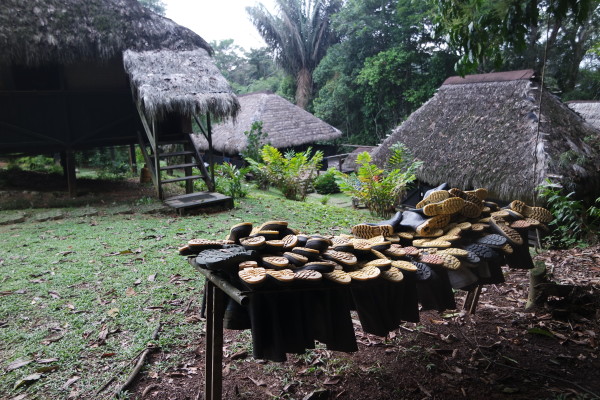
THE CLIMATE OF ECUADOR'S AMAZON RAINFOREST:
A FASCINATING INTERPLAY BETWEEN WEATHER AND NATURE
Welcome to the Cuyabeno Wildlife Reserve, the second largest in Ecuador, covering an impressive 603,380 hectares! Amidst this lush landscape, the Cuyabeno Reserve is characterised not only by its amazingly flat topography, but also by a multitude of lakes and streams, making it one of the most accessible natural paradises in the Amazon.
But what about the weather here in the heart of the rainforest? A common question asked by many visitors is whether there are wet and dry seasons and when they occur. Let’s explore the secrets of the climate in the Ecuadorian Amazon together!
The climate in this magical part of the world is characterised by an impressive average annual rainfall of around 3,000 mm, which equates to around 200 days of rain. Temperatures stay comfortably between 73 and 82 °F (23 and 28 °C). So what does this mean for your trip?
There are clear seasonal differences between the wet and dry seasons. The term ‘dry’ is somewhat misleading – it doesn’t mean that it doesn’t rain at all, just that there is less rainfall during this time. However, the rainforest remains green, vibrant and full of surprises!
The dry season usually begins in September and lasts until early to mid March. During these months, the water level in the large lagoon where Cuyabeno Lodge is located drops and many of the water bodies dry up. This is the best time to observe the fascinating aquatic and semi-aquatic animals such as anacondas and alligators that are easily seen in the remaining waterholes.
From March to August we experience the rainy season, which transforms the Cuyabeno Reserve into a true oasis. Here, rain is not only normal, but an integral part of the adventure! Remember: it always rains! But don’t worry – even in a downpour, the birds and mammals are out and about in all their splendour. At Cuyabeno Lodge, we provide practical raincoats and rubber boots so that you are well equipped for your exploration of the rainforest.
A special advantage of Cuyabeno Lodge is its unique location on a hill next to the large lagoon. During the rainy season we are well protected by this elevated position – flooding is a foreign word here! The water level of the lake and river can rise up to 5 metres above normal, but our location on one of the few hills in the region ensures that you can always enjoy the beauty of the rainforest with dry feet.
Prepare for an unforgettable adventure in the Cuyabeno Reserve, where the climate determines not only the weather, but also the vibrant variety of flora and fauna that awaits you. Immerse yourself in the wonders of the Amazon!




